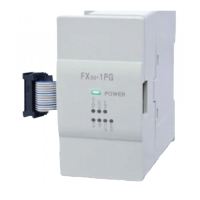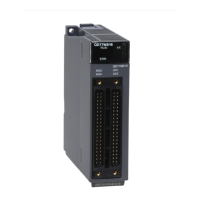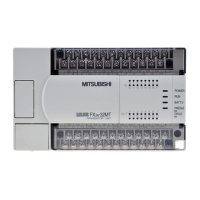2Preparation for Using Extended Function
Operation flow 2-16
4) Case 4: Robots 1, 2: Extended function is disabled, Robot 3: Extended function is enabled (#2)
This example allocates 1K area in advance so that the allocation is not changed even when
the extended function is enabled in the future, while the extended function was disabled and
the extended area was not allocated.
Empty area of 0.5K is kept at the back of each transmission area of robot 1 (for robots 2, 3).
By default, the robot 2 input area starts at 0.5K offset from the beginning of shared memory
(By default, the extended function of robots 1 is also assumed to be disabled, similar to robot
2). Therefore, the multiple CPU input offset parameter (QMLTCPUS) of robot 2 should be set
to "1".
Device #1
(sequencer)
Transmission
area of Device
#1, 3K word
(1K x 3)
Transmission
area of Device
#2, 1K word
Device #2 (robot 1)
Extended Function:
Invalid
Device #3 (robot 2)
Extended Function:
Invalid
Device #4 (robot 3)
Extended Function:
Valid
Transmission area of Device #1
(for Device #4)
Transmission
area of Device #4
Transmission
area of Device
#4, 1K word
Robot input
Robot output
Transmission area of Device #1
(for Device #2)
(Empty)
Robot input
Transmission
area of Device #2
Robot output
Transmission area of Device #1
(for Device #3)
(Empty)
Transmission
area of Device #3
Transmission
area of Device
#3, 1K word
Robot output
Robot input
U3E0\G10000
Input offset parameter of
robot 2 is changed

